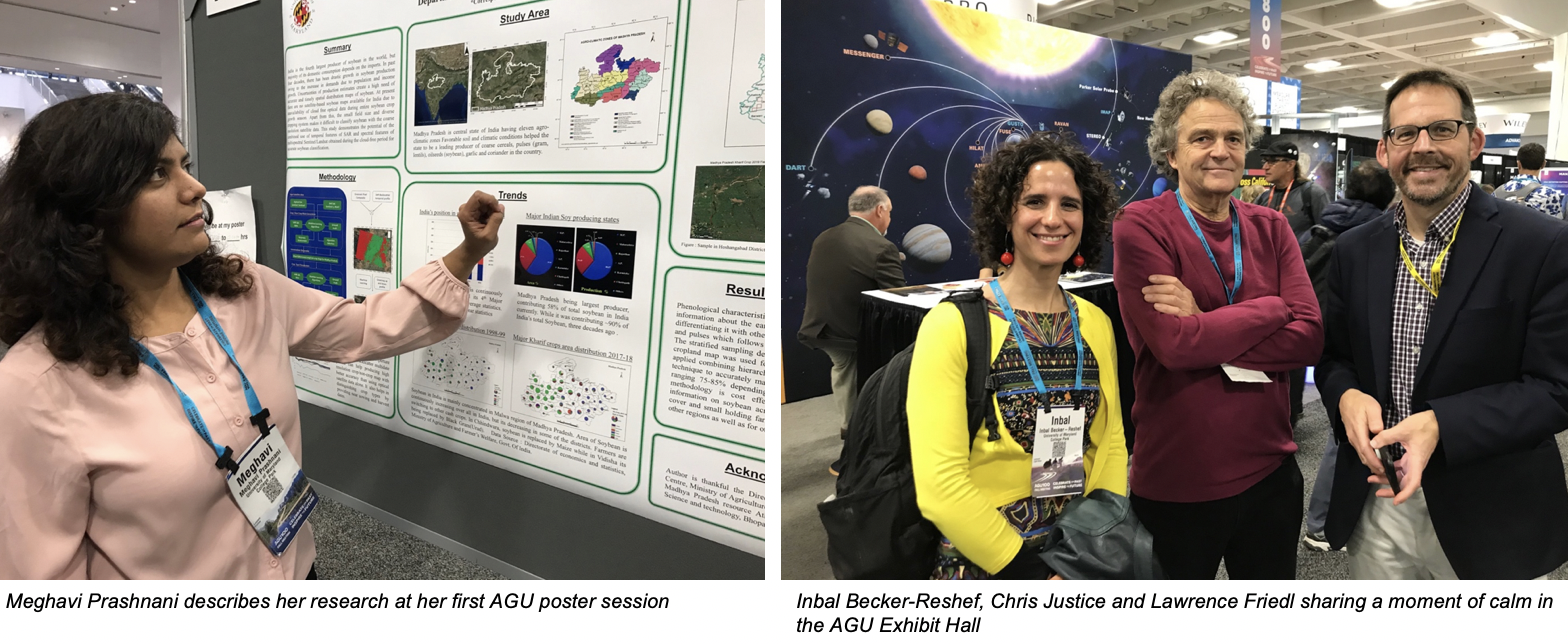EO for Ag Takes the Stage at AGU 2019
From all indicators at the American Geophysical Union's 100th Anniversary meeting in San Francisco last week, the topic of Earth observations in agricultural monitoring has taken hold. With over 40 talks and posters by NASA Harvest Consortium members, including a very well-attended, day-long session on Tuesday, a NASA Hyperwall talk on Wednesday, a Town Hall panel discussion on Thursday, e-Lightning talks on Friday, plus numerous related presentations, interest in this community-of-practice and excitement about the Harvest program, continues to grow. As Alyssa Whitcraft, Harvest Deputy Director and Manager describes it, "It's been a real growth period compared to when we started the GEOGLAM session tradition in 2011, when it was one of two agricultural monitoring sessions. It shows that there's general agreement that #EO4Ag is feasible, important, and an integral part of bigger activities, including SDGs and sustainability in general."
Advancing public-private partnerships in agriculture, as well as in the broader NASA Earth Sciences community, was a particularly hot topic this year. Harvest co-hosted sessions, meetings, and side-events with Planet, Farm 2050, and Climate Corp to help turn ongoing dialogues into measurable commitments to address key sustainability challenges. One outcome was a jointly written article posted on Planet's and Harvest's websites, highlighting the promise and challenges for these "PPPs." As Lawrence Friedl, Director of the Applied Sciences Program within the Earth Science Division at NASA puts it, “Sustainable agriculture ultimately benefits all of society. But in a competitive economy, there are specific areas where individual companies are not financially incentivized to invest. If a public sector entity were to do it, it could help everyone.” Chris Justice (Harvest Chief Scientist) noted that the Planet CEO, Will Marshall, seemed particularly interested in making partnership with Harvest real and concrete. Sylvain Coutu, Head of Innovation Special Lines at Swiss Re - and also the Chair of Harvest’s PPP activity - points out, “it will require creativity and coming out of comfort zones. We need to enter partnerships with trust and work towards specific, quantifiable metrics.”
Stay tuned in 2020 as NASA Harvest and partners continue to work toward delivering on nearly decades of Earth observations for agricultural monitoring.
*Photos provided by Kim Locke (Harvest Hub) and Alyssa Whitcraft (Harvest Hub)*




